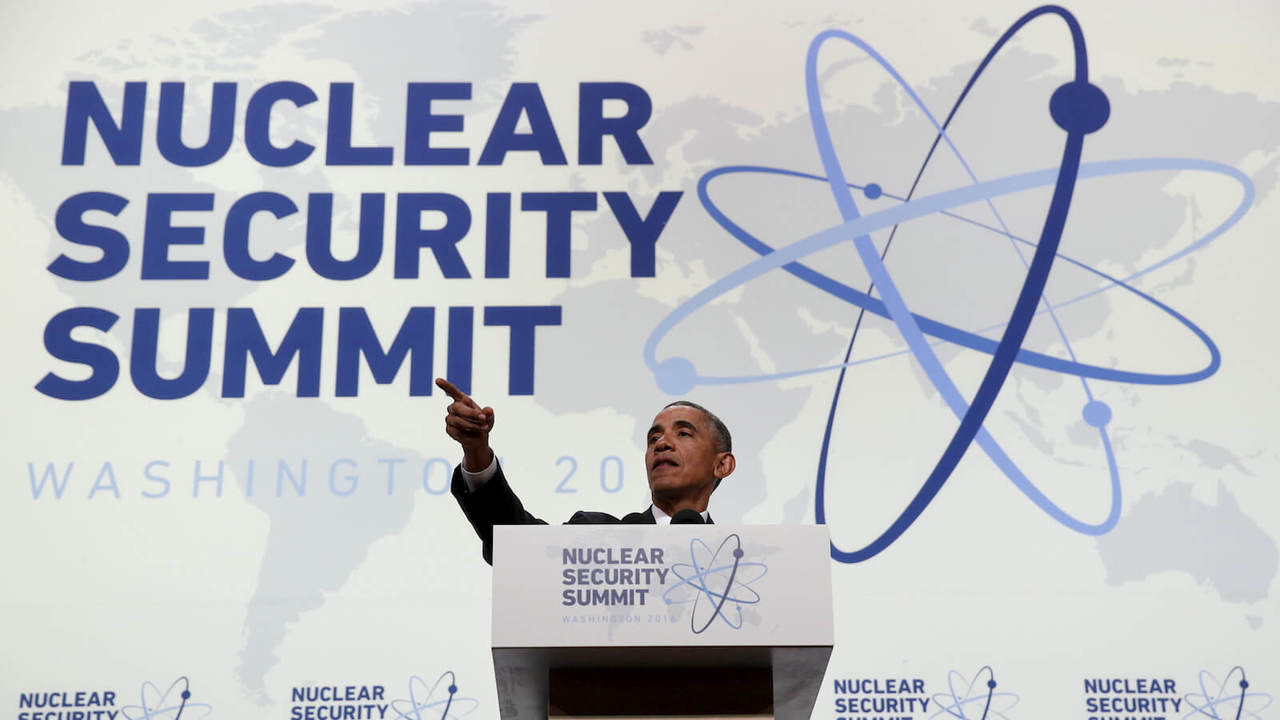
The Nuclear Security Summit process, which concluded earlier this month in Washington, DC, shows what can be achieved when political leaders come together to concentrate on a global problem. The six-year initiative, focused on preventing nuclear terrorism, produced important outcomes on eliminating, minimizing, and securing dangerous nuclear and radiological materials.
Unfortunately, however, the nuclear threat is still far from being neutralized. The dangers posed by terrorist groups are growing, as are the risks from competition and conflict between nuclear-armed states. Strong leadership and global cooperation must also be deployed to address other urgent nuclear dangers, particularly the threat of further testing and proliferation of weapons.
Few bright signs
There are few bright signs on the horizon. On the contrary, almost every nuclear-armed state is either expanding or upgrading its nuclear arsenal. There are no active negotiations to regulate, cap, or further reduce nuclear stockpiles.
Russia and the United States have each deployed more than 1,800 strategic warheads on several hundred submarines, bombers, and missiles – far more than is necessary to deter a nuclear attack. Many of these weapons can be launched within minutes, increasing the risk of miscalculation. Meanwhile, North Korea could soon be able to arm ballistic missiles with nuclear warheads, a development that would pose a significant threat to all of Asia.
Given the grave dangers, it is in every country’s interest to halt further nuclear competition and eliminate the risks associated with the world’s remaining stockpiles of some 15,000 nuclear weapons.
As U.S. President Barack Obama and Kazakh President Nursultan Nazarbayev noted in separate statements during the Nuclear Security Summit, a key element of an effective global risk-reduction strategy must be to bring the 1996 Comprehensive Nuclear-Test-Ban Treaty (CTBT) into force. If existing nuclear powers cannot conduct tests, they will not be able to try out new, more sophisticated warhead designs. Similarly, without test explosions, newer nuclear-armed states will have a far more difficult time developing and fielding smaller, more easily deliverable warheads.
The CTBT has near-universal support. With 183 state signatories and a de facto test ban in place, the treaty is now a key component of the international nuclear nonproliferation system. It has established a taboo against testing (violated since 1998 only by North Korea) and slowed the global arms race.
And yet, nearly 20 years after its adoption by the United Nations General Assembly, the CTBT is not valid international law – largely because the US has not ratified it. The U.S. Senate’s rushed and highly partisan 1999 vote against ratification – and its failure to reconsider the treaty since then – has given the seven other states that must ratify the CTBT a reason for delay. As a result, the door to further nuclear testing remains open.
Last fall, U.S. Secretary of Energy Ernest Moniz and U.S. Secretary of State John Kerry suggested that the Senate revisit the issue. Unfortunately, President Barack Obama does not have enough time left in office to launch the time-consuming education and outreach campaign needed before bringing the CTBT to the Senate for another vote. But his administration could intensify the necessary preparatory work – for presenting new information, answering detailed questions, and dispelling old myths and misconceptions – before he leaves office.
Even if the next US president and Senate do reconsider ratification of the CTBT, a vote may not happen for several years. In the meantime, it is essential that world leaders seek ways to encourage ratification by other CTBT holdout states and to reinforce the de facto global moratorium on testing.
The G-7 foreign ministers’ declaration on April 11 in Hiroshima – “No state should conduct a nuclear test explosion and all states should sign and ratify the CTBT without delay” – is a good start. No one knows that better than Japan and Kazakhstan, which have suffered from the terrible effects of nuclear detonations. As their respective foreign ministers, Fumio Kishida and Erlan Idrissov, warned in September, business as usual will not suffice.
Renewed cooperation and leadership
Kishida and Idrissov have invited their counterparts to a ministerial-level meeting in Vienna on June 13 to explore options for bringing the CTBT into force. They will encourage key holdout states to reaffirm their support for the global testing taboo and to pledge that they will consider ratification “at the earliest possible time.”
As we approach the 20th anniversary of the CTBT, members of the UN Security Council and the General Assembly can take further steps to ensure that nuclear testing remains off-limits. For example, they could pursue the adoption of a new Security Council resolution and a parallel General Assembly measure calling on all states to refrain from testing and urging quick action on ratification.
Such an initiative would reinforce the global norm against testing and stimulate movement by holdout states. Just as leaders have cooperated at the Nuclear Security Summit to prevent nuclear terrorism, we need renewed cooperation and leadership to end nuclear testing once and for all.
(C)Project Syndicate

